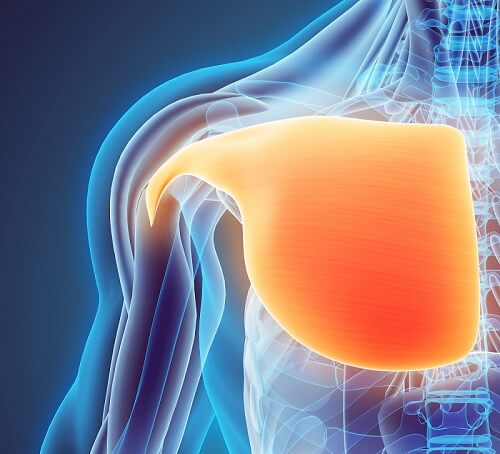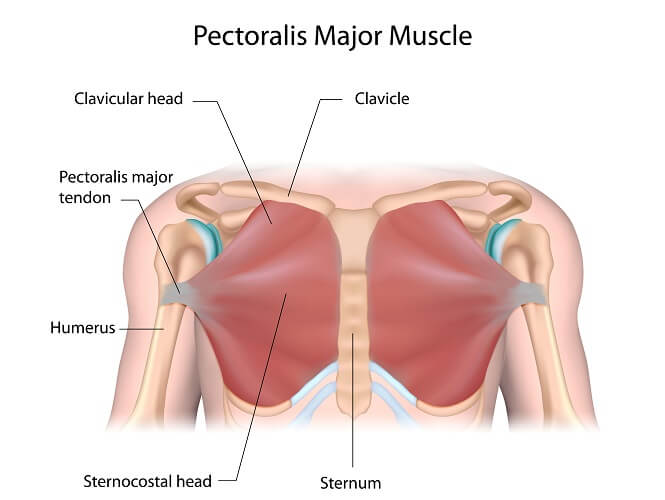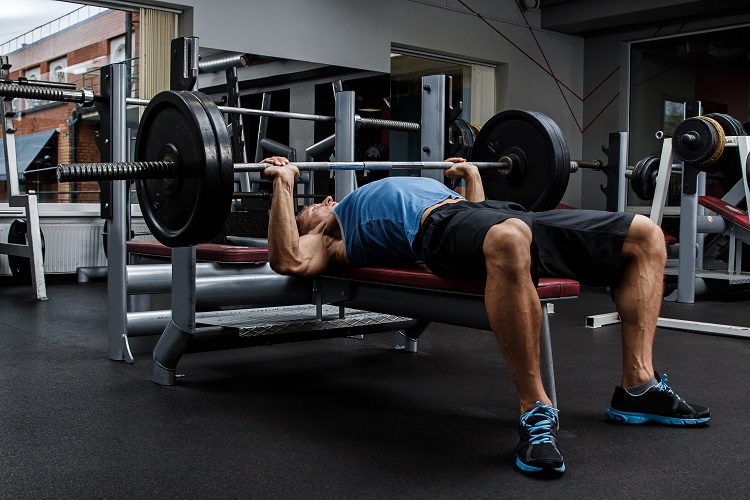Definition
The pectoralis major is a large, fan-shaped muscle that forms the structure of either side of the surface of the chest wall. Together, these muscles are commonly known as the “pecs.” The two muscles make up the bulk of the chest in males and lie under the breast tissue in females. Injuries to these muscles are most often acquired during intense, forceful exercises, such as powerlifting.

Location of the Pectoralis Major Muscles
The pectoralis major muscle is a relatively large muscle found on either side of the upper chest. It is one of the four pectoral muscles found in the chest. Each pectoralis major muscle extends from the sternum in the middle of the chest to the humerus in the upper arm. Both muscles have two portions or heads, the clavicular head, and the sternocostal head.
Origin of the Pectoralis Major Muscles
Each head of the pectoralis major has a different site of origin. As indicated by the name, the clavicular head arises from the clavicle, which is the collar bone. Specifically, it originates from the anterior part of the medial half of the clavicle.
The sternocostal head originates from three sites: the anterior surface of the sternum (or the chest bone), the cartilage of the upper six ribs, and the aponeurosis of the external oblique muscle.
Insertion of the Pectoralis Major Muscles
The pectoralis major inserts into the humerus, at the crest of the greater tubercle. The crest of the greater tubercle forms the lateral lip of the bicipital groove. The bicipital groove, also known as the intertubercular groove or the sulcus intertubercularis, is a deep groove on the humerus bone that lodges the biceps. Before its insertion into the humerus, the pectoralis major crosses over both heads of the biceps muscle.

Innervation of the Pectoralis Major Muscles
The medial pectoral nerve and lateral pectoral nerve supply motor innervation to each of the pectoralis major muscles. These nerves are both branches of the brachial plexus, a network of nerves that extends from the spinal cord and supplies the upper limbs.
Action of the Pectoralis Major Muscles
The pectoralis major muscles are primarily associated with two actions: the movement of the shoulder joint and keeping the arm attached to the trunk.
In terms of movement, each of the heads of the muscle have different actions. When the clavicular head contracts, it permits flexion of the humerus and raising of the arms (like when a bowling ball is tossed), adduction of the humerus (like when raising the arms to do a star jump), and inward rotation at the humerus.
When the sternocostal portion contracts, it works oppositely to the clavicular head, allowing the arm to move in a downward motion.
Injury to the Muscles
The pectoralis major muscles are most often injured by men aged 20-40. Usually, tears to the muscle are acquired as a result of high impact exercises such as weightlifting (specifically bench pressing), football, rugby, and wrestling.
A tear normally occurs during a particularly sharp or violent action. The individual will likely feel pain and a “pop” in the shoulder, which is a sign that the tendon has ruptured off of the humerus bone. This results in the muscle becoming deformed, and swelling and bruising around the local area. When the tear is severe, it is most often repaired via surgery. This is especially important if the affected individual wants to restore full functionality to the muscle.

Quiz
